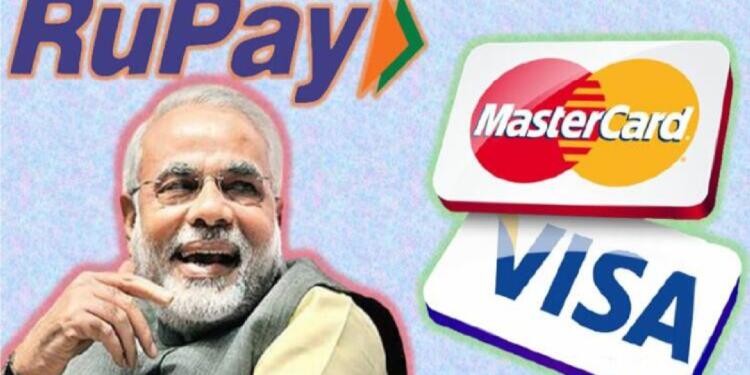The BCCI has roped in the National Payments Corporation of India’s (NPCI) flagship product RuPay as an official partner for the next two seasons of the Indian Premier League (IPL).
With this, RuPay establishes its position in India as a leading network payment processor. Launched in 2012, the payment gateway has come a long way over the past ten years. Earlier, it was portrayed as a tool for the government’s financial inclusion programme. But it is now becoming a real commercial player in the Indian market. Let us trace the journey of India’s RuPay which has managed to compete with giants like Visa and MasterCard.
How Prime Minister Modi managed to boost RuPay
In its initial years, payment gateway couldn’t make deep inroads in the Indian market. Giants like MasterCard, Visa and American Express were already leading the card payments network and the payment gateway didn’t get the opportunity to grow quickly.
Thereafter, PM Modi came to power, and he simply changed the way the Indian financial system works. He launched the Pradhan Mantri Jan Dhan Yojana (PMJDY) that made it a point to promote financial inclusion. And he backed up the financial inclusion agenda with the Direct Benefit Transfer (DBT) scheme.
At the same time, there was a lot of stress on eliminating the use of cash in the Indian economy and promoting a cashless economy. On December 8, 2016, high denomination notes of Rs. 500 and Rs. 1,000 too were demonetised by the Modi government. So, India’s card payment network expanded from urban areas to semi-urban and rural areas.
But how did India achieve the twin goals of financial inclusion and building a cashless economy? Well, through RuPay cards.
Choosing RuPay over MasterCard and Visa
Banks had to pay high affiliation charges to multinationals like MasterCard and Visa earlier. But with RuPay, they were able to bank upon an Indian network. Under PMJDY, a total of 258 million RuPay debit cards were thus issued in 2020 alone by India’s public sector banks.
Read more: How Desi RuPay defeated the global giants MasterCard and Visa
And therefore, RuPay’s market share rose from 15 per cent in 2017 to more than 60 per cent in 2020.
Read more: Mastercard has halted its Russia operations, time for PM Modi to introduce Russia to RuPay
RuPay going global
In 2018, PM Modi visited the Indian Heritage Centre in Singapore, where he bought a Madhubani painting. And how did he purchase it? Well, he chose an SBI RuPay card to make the payment.
This was a signal of the payment gateway going global. In 2019, RuPay informed that it is now used by citizens of 195 countries. A few months later, PM Modi launched the payment gateway in Saudi Arabia as well. Currently, it is accepted in 42.4 million POS locations and 1.90 million ATMs in more than 200 countries.
How becoming the IPL official partner helps RuPay
So, RuPay is truly competing with the top global card payment networks in the world. But what it needed was more visibility in the market. At the end of the day, all brands need advertisements to make that one big leap.
For RuPay, getting roped in as IPL’s official partner is that one big leap. Now, the payment gateway can transform its image into a leading card payments network system, instead of appearing as a tool of the government’s financial inclusion agenda.
There was a time when no one could have thought that RuPay would lead the cards payment network market. But then, PM Modi came to power, and everything has changed since then.
